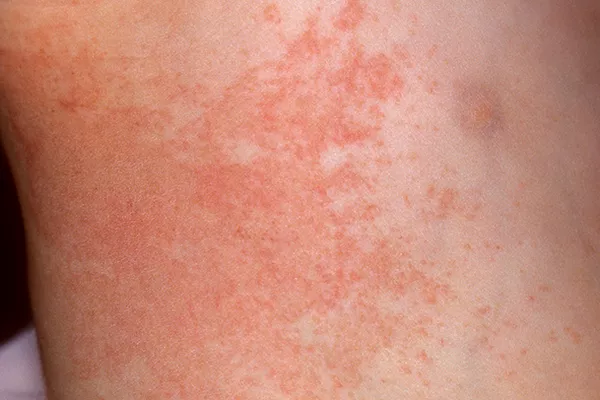Vitiligo is a skin condition characterized by the loss of melanocytes, the cells responsible for producing pigment in the skin. This loss results in patches of depigmented skin, which can vary in size and location on the body. One common concern among individuals with vitiligo is whether the condition will spread beyond its initial appearance. This article explores the factors influencing the spread of vitiligo, discusses different types of vitiligo, and provides insights into management and treatment options.
Understanding Vitiligo and Its Types
Vitiligo can manifest in several ways, each influencing its spread and progression differently. The main types of vitiligo include:
1. Non-Segmental Vitiligo (NSV)
Non-segmental vitiligo, also known as generalized vitiligo, is the most common form. It typically appears symmetrically on both sides of the body and often progresses over time. NSV can affect any part of the body, including the face, hands, arms, feet, and genital areas. The spread of depigmentation in NSV can be gradual, with new patches developing over months or years.
2. Segmental Vitiligo (SV)
Segmental vitiligo is characterized by depigmented patches that develop on one side of the body and typically follows a dermatomal pattern (affecting a specific segment or area of the skin). SV often occurs at a younger age than NSV and tends to stabilize or stop spreading after a period of active progression.
3. Mixed or Combined Vitiligo
Mixed vitiligo exhibits characteristics of both NSV and SV, with depigmented patches appearing on both sides of the body in a non-symmetric pattern. This type can be more unpredictable in terms of spread and response to treatment.
Factors Influencing the Spread of Vitiligo
The spread of vitiligo is influenced by a variety of factors, including:
1. Genetic Predisposition
Genetics play a significant role in the development and progression of vitiligo. Individuals with a family history of vitiligo are more likely to develop the condition and may also experience a more extensive spread of depigmentation.
2. Autoimmune Factors
Vitiligo is considered an autoimmune disorder, where the immune system mistakenly attacks and destroys melanocytes. Autoimmune conditions can vary in severity and may impact the spread of vitiligo.
3. Environmental Triggers
Certain environmental factors, such as stress, exposure to chemicals, and trauma to the skin (like sunburn or cuts), can trigger or exacerbate vitiligo. Managing these triggers may help in controlling the spread of the condition.
4. Age of Onset
The age at which vitiligo first appears can influence its progression. Early onset vitiligo, especially before adolescence, may have a higher likelihood of spreading rapidly compared to cases that develop later in life.
5. Location of Initial Patches
The initial location of vitiligo patches can also impact their spread. Patches on areas of the body with higher concentrations of melanocytes, such as the face, hands, and feet, may be more prone to spreading than patches on areas with fewer melanocytes.
SEE ALSO: Is Tacrolimus Good for Vitiligo
Management and Treatment Options
While there is currently no cure for vitiligo, several treatment options can help manage symptoms and potentially slow or stop the spread of depigmentation:
1. Topical Treatments
Topical corticosteroids, calcineurin inhibitors, and vitamin D analogs are commonly prescribed to help repigment the skin and reduce inflammation.
2. Phototherapy
Phototherapy, including narrowband UVB therapy and excimer laser treatments, can stimulate repigmentation in affected areas by targeting specific wavelengths of light to the skin.
3. Oral Medications
In some cases, oral medications such as oral corticosteroids, immunomodulators, and vitamin supplements may be prescribed to modulate the immune response and encourage repigmentation.
4. Surgical Options
Surgical interventions, such as skin grafting, blister grafting, and melanocyte transplantation, are considered for stable vitiligo patches that have not responded to other treatments.
5. Cosmetic Camouflage
Cosmetic options, including makeup, self-tanners, and tattooing (micropigmentation), can help conceal depigmented areas and improve aesthetic appearance.
Clinical Course and Prognosis
The clinical course of vitiligo can vary widely among individuals. While some may experience periods of stability with minimal spread, others may see progressive depigmentation despite treatment efforts. Understanding the factors influencing the spread of vitiligo and individualizing treatment plans based on these factors are crucial for managing the condition effectively.
Conclusion
In conclusion, not all vitiligo spreads in the same manner or to the same extent. The spread of vitiligo depends on various factors, including the type of vitiligo, genetic predisposition, autoimmune factors, environmental triggers, age of onset, and initial patch location. While treatment options exist to manage symptoms and potentially slow the spread of depigmentation, the clinical course of vitiligo can be unpredictable. Consultation with a dermatologist or healthcare provider is essential for developing a personalized treatment plan and understanding the prognosis of the condition. By addressing these factors proactively, individuals with vitiligo can better manage their condition and maintain quality of life.
Related Topics:


























